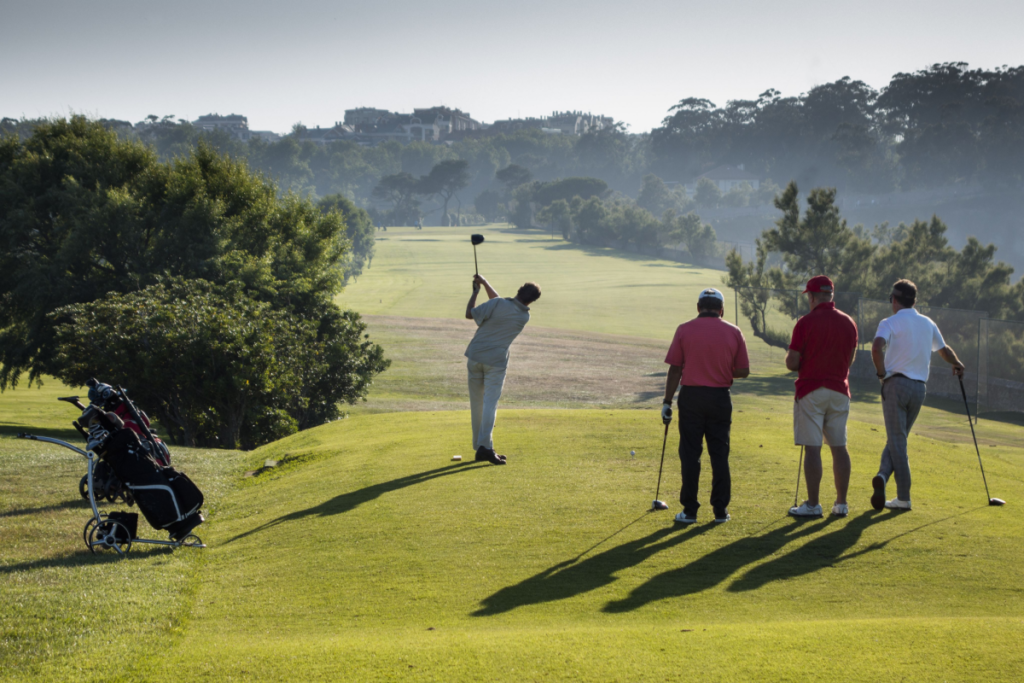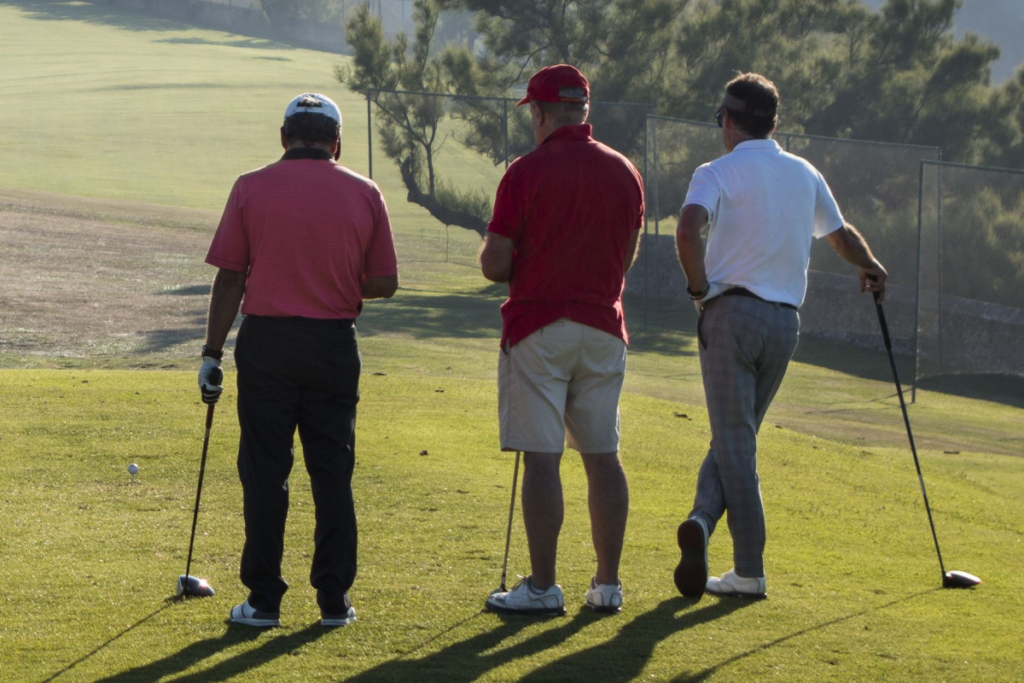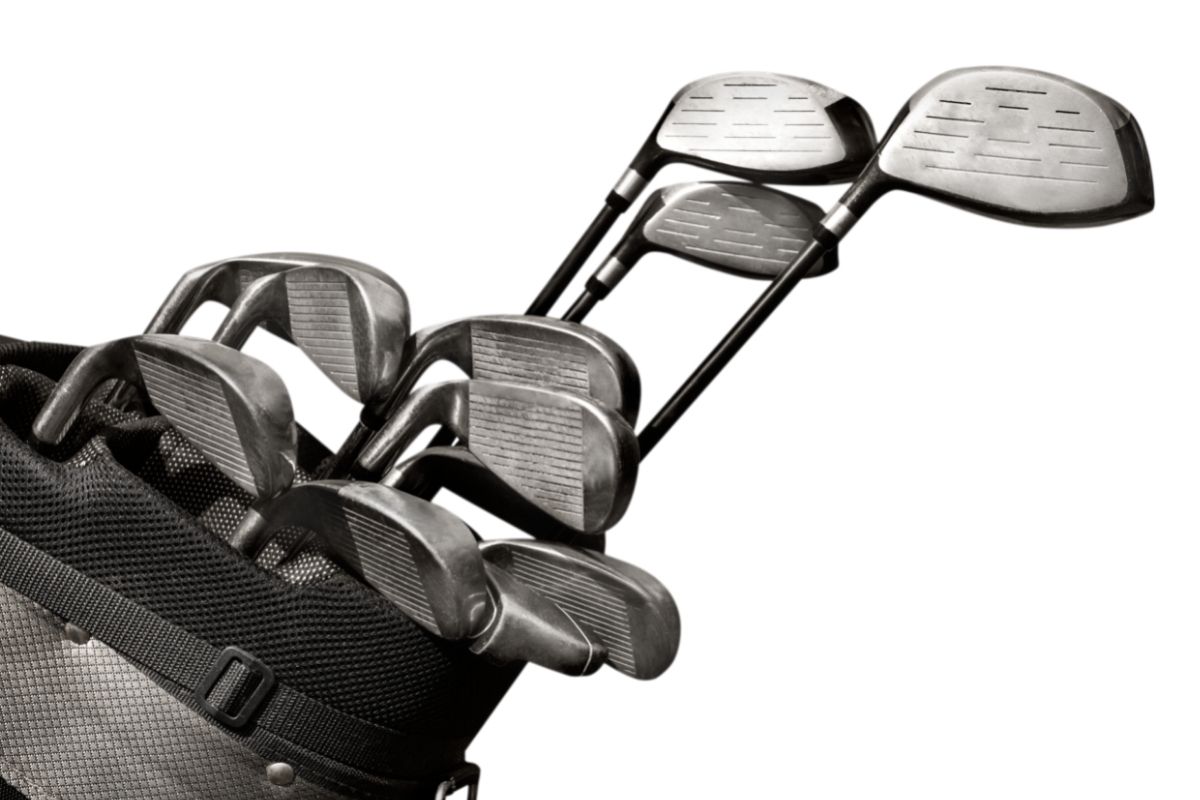We occasionally recommend products we love and might be paid a share of the sale.
Few sports have as many rules as golf. It’s often hard to keep them all straight and know the proper course of action in any given situation. Most of these rules are formal and fully detailed in the rules of golf and some rules are more informal and better described as etiquette.
This article will cover the basic rules for determining playing order among golfers. We’ll cover the rules governing formal competition like determining honors for tee shots, deciding playing order each subsequent golf shot, and why these rules exist.
We’ll also discuss commonly used alternatives to this formal playing order system and explain why Ready Golf is always preferred in causal golf rounds.

Who Goes First?
When you’re playing in a formal golf competition, the order of play is rigidly set by the rules of golf. For the first tee shot of the day, the order will be determined by the tournament organizers.
Order for the initial tee shot is commonly determined by a subjective metric. Player handicaps are often used for this purpose with the lowest handicap player going first.
If you are playing in a bracketed match play event, the lower seeded play will go first. This often corresponds to the handicaps as well.
If you’re playing in a multi-day stroke play golf event, the playing order within your group will be decided based on aggregate scores from the previous rounds. The lowest score in your group will have the honor and tee off first on the first hole.
Also worth noting, which tee time you are assigned to will also be determined this way. The tournament leaders will always tee off in the final group.
Determining Honors for the Subsequent Tee Shots
After the first hole, the relative score of the golfers in a particular group will determine who has the honor and therefore hits first on the on the next hole.
The process is simple. The player with the lowest score on the 1st hole has the honor on the 2nd hole. The player with the lowest score on the 2nd hole has the honor on the 3rd hole. This continues until the round is complete.
If players tie for the low score on a hole, the honor stays with the player that had the honor previously.
Often tournaments will have three or four players in a group. Determining the playing order for second, third, or fourth works the same. Lower scores tee off first and higher scores tee off last. Ties are always broken by carrying over the playing order from the previous hole.
Determining Playing Order for All Other Golf Shots
Now that you know which player hits from the tee box first, how do you decide the playing order for the next set of shots?
Easy! Distance from the hole is used to determine the playing order for subsequent golf shots. The golfer that is farthest from the hole plays next in every instance. This is frequently conveyed to the other players by saying “I’m out” or “you’re out.”
It’s normally easy to determine who is out just by sight, but occasionally two players will seem to be equal distant to the hole. These players will need to resolve the order between themselves. Often, the two players will compare the yardages they have calculated or invite a third player to help make a determination.
Also, the condition of your lie does not matter, only the distance from the hole. Being on the green does not exempt you from the playing order. In fact, it’s common for players on the green to play before player just off the green but closer to the hole.

Why Playing Order Matters in Golf
The order of play is important for a few different reasons, some obvious and others more subtle.
Tee Shot Honors
Having the honor on the tee shots gives you a slight psychological advantage. You’re able to set the tone of the hole with your shot as well as physically demonstrate your superior play on the previous hole.
However, hitting first can also have disadvantages. For example, playing first can provide your competitors with valuable information like playing distance, wind conditions, or the firmness of the ground in the landing area.
Closer to the Hole is Always Better
The advantage on subsequent golf shots almost always goes to the players that are closer to the hole. Being “out” is rarely a good thing.
When you play first, the result of your shot has the potential to inform the other players and provide them information that could be valuable in making adjustments to their own shot. This is especially true for putting since the way your ball rolls on the green can make it easier for the other players to see how their putt will break.
Playing Order is Critical for Certain Games
Playing order is especially important in some types of golf games. Quirky golf games like Bingo Bango Bongo and the Wolf golf game do require formal honors and playing order to be fair to all participants.
Playing order is also important in match play games. Since match play is direct hole-by-hole competition, knowing the outcome of your opponent’s shot can have a significant impact on how you choose to play your own shot.
Play Ready Golf Whenever Possible!
In formal competition, determining the order of play and sticking to the rules is important and required. However, the vast majority of the golf you play is not formal tournament golf.
For your standard casual golf rounds, always play ready golf. When you’re ready to play, hit your shot.
Golf is so much more fun when played quickly. Your playing partners will thank you and the group of golfers behind you will truly appreciate the effort.
Checkout our article explaining ready golf in detail and some suggested ready golf etiquette.
Conclusion
Determining honors and playing order on the golf course is simple and straightforward.
Relative score (with the lower score playing first) will be used to determine playing order on the tee box. The player furthest (out) from the hole will always be up next for approach shots, chips, and putts.
These rules are made for a reason and should be adhered to during formal tournaments; however ready golf is always preferred in normal golfing situations.
- Funny Golf Terms - February 21, 2023
- How To Play Vegas Golf Game - February 16, 2023
- How To Play Wolf Golf Game - February 16, 2023








